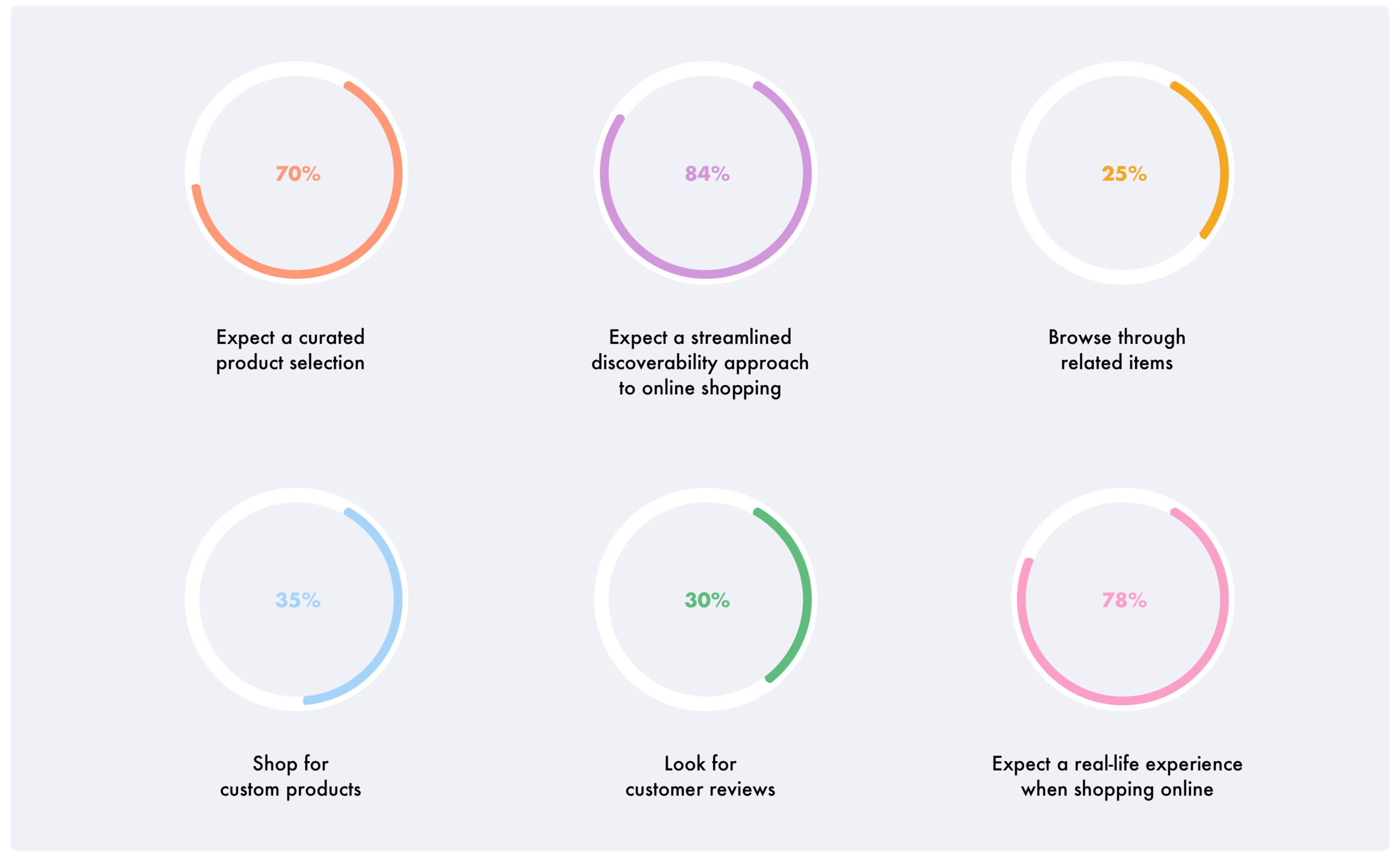
Project Overview
Case Study
Etsy
My Role
Product
iOS App
Summary
This is an independent case study for the Etsy app redesign, in collaboration with Allie Toussaint and Evelyn Donnelly. Problem solving the way buyers identify sellers who take custom requests while allowing those sellers to easily take customization requests via a seamless interface.

Background
At the time our project was completed, there were limited options for which a customer could request a customization/personalization. It usually came down to messages or emails between customer and seller which could potentially get messy and confusing for both parties involved.
Project Brief
The task is to add a customization feature to the Etsy app that will allow its Buyers to easily identify Sellers who take custom item requests via a seamless interface.
Research
2020 Industry Report by SaasScout.com
Frequency of custom purchases on Etsy
While many users never made custom requests and purchases on Etsy, we found an opportunity to unveil why this was the case. We also discovered pain points that current Buyers came across while making custom item purchases on the Etsy app.
Objectives
∘ Validate the need for a new customization feature.
∘ Discover what our target user’s experience is with the Etsy app.
∘ What are the user’s expectations when they go to Etsy.com or use the app?
∘ Separate the Seller’s experience from the Buyer’s experience.
∘ Understand pain points with current information architecture.
∘ Understand how IA affects browsing experience when looking for customizable items.
User Interviews
Synthesized Findings
*click to expand

Problem Statement
Both Etsy Sellers & Buyers are frustrated with the limited means to express customization. How might we provide a more streamlined and nuanced communication regarding customized items, so that Etsy feels personal and efficient?

Personas
Defining the Product’s MVP
As a result of our research, we were able to categorize features into three groups:
“must have”, “should have” and “won’t have (for now)”.
User Expectations
Design Approach
Upbeat, fun, conversational, and friendly…
When integrating a new feature to a product design, it’s important to consider the user’s familiarity with the current design that exists. A drastic change to the ui could potentially affect the user experience and would take more effort, time, & money in educating the user.

Buyer’s App
The Etsy Buyer’s app flows effortlessly from product to product. The app does a wonderful job at showcasing items in groups, curated themes, and best sellers. However, it is difficult to easily identify products that could be custom-made or personalized.
My design solution is to integrate a new feature called: Custom Item.
By including a small scissor icon (as seen on last 2 screens below), users can scroll and visually see which particular items are listed under Customizable. Educational banners will also live within the design, these can inform the user about the new feature.
Custom Orders
Before the redesign, custom-made items had very long product descriptions and step by step ordering instructions provided by the Seller. This was a challenge, because placing a custom item order usually came down to back and forth messages or emails between the Buyer and the Seller. This was a pain point to a few Buyers, as they sometimes failed to give important information regarding sizing or color.
On the redesign I wanted to focus on a one page scroll design. This design prompts the users to answer various questions about their custom item in a systemic and succinct way.
Current
Redesign
Seller’s App
The process to list an item on the seller's end consisted of many screens and clicks with no indication of how many steps it would take. There were also few options for a seller to communicate customization. As a result, sellers may not complete the listing process or fail to give enough information about an item.
The redesign is a one page scroll design, offering the Seller options to go into depth with their item listing description. The more tailored this description is, the higher the opportunity for a Buyer to find this particular item within the Etsy algorithm.
Current
Redesign
Discoverability
The current Etsy search bar works with filters. My redesign allows the Buyer to search for items under a Customize Item tab within the app, allowing for a more detailed & tailored discoverability experience to meet the user’s needs.
Current
Redesign
Seller’s Homepage
I wanted to give the Seller the opportunity to view and manage their listings directly on their homepage.
Current
Redesign
Conclusion
Feature integrations can elevate a user’s experience and help the brand cater to Buyers and Sellers looking for a unique and custom transaction. Let’s enable Etsy to move back to its origins – a place to discover special items and shops that meet specific desires.

















